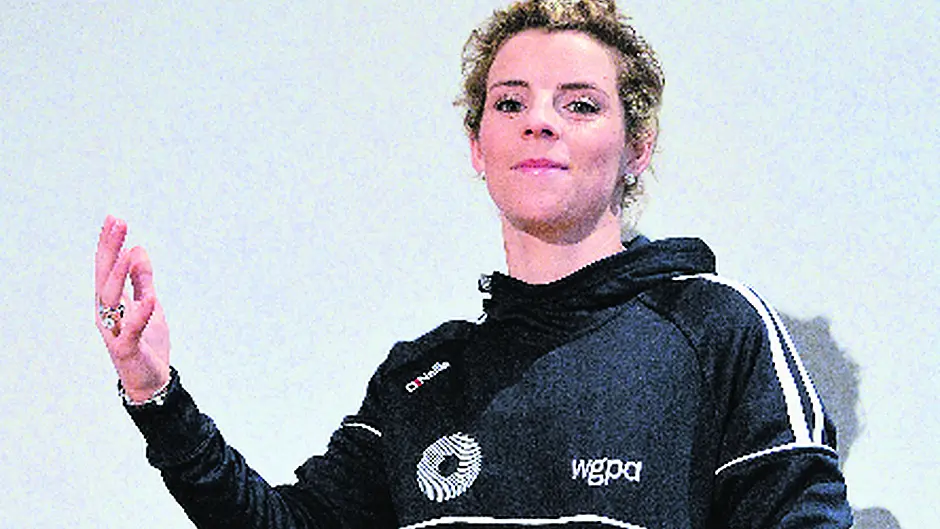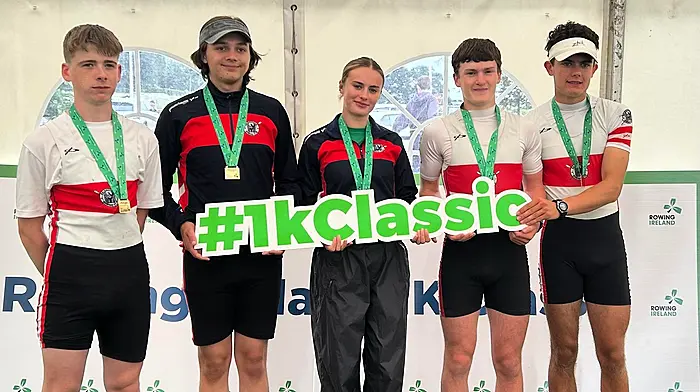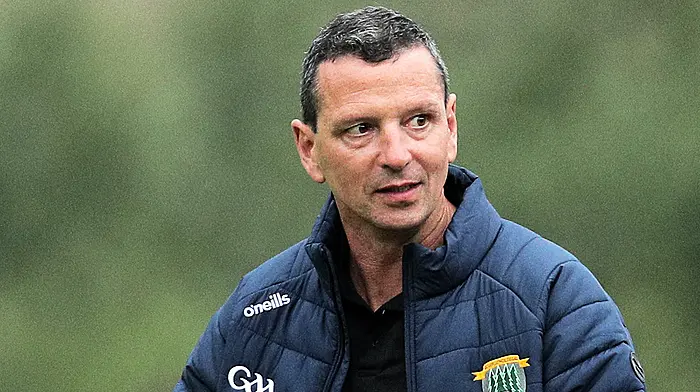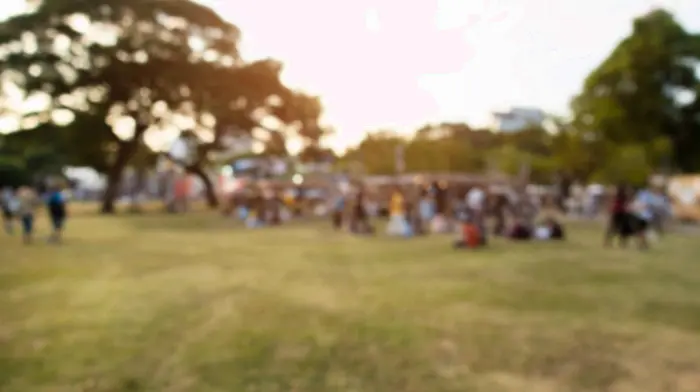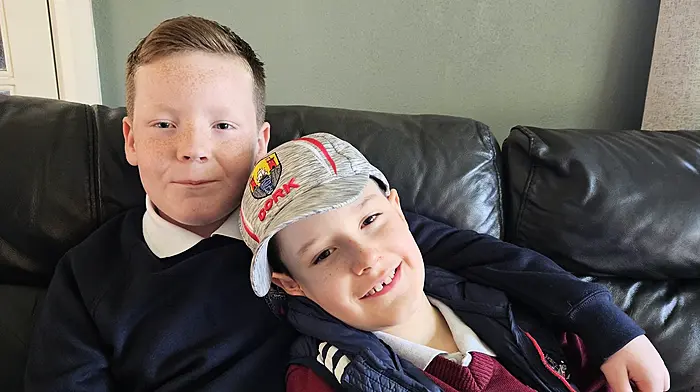WHEN Valerie Mulcahy spoke recently about women’s GAA players being treated like ‘second class citizens’ compared to our male counterparts, it struck a chord.
BY JENNIFER O'LEARY
WHEN Valerie Mulcahy spoke recently about women’s GAA players being treated like ‘second class citizens’ compared to our male counterparts, it struck a chord with me.
I know exactly what Valerie was talking about, those barriers and challenges that make it so difficult for women in the GAA.
I played inter-county camogie with Cork for more than 12 years – and I loved every minute of it – but I’m not going to lie and say it was all wonderful, because some of what I experienced in my playing days still frustrates me. It wasn’t good enough. Player welfare was non-existent.
Many inequalities still exist between men and women in the GAA. Why is there one rule for one and another for others? Why is there one standard for one (men) and another for others (women)?
By speaking out about her own experiences, Valerie has helped shine a spotlight on the differences that exist within the GAA for men and women. It’s when players like Valerie stand up and highlight these issues that, hopefully, we can start to make a difference and forge a better future for the next generation. Our voices need to be listened to and lessons need to be learned.
Being afforded the opportunity to play in Páirc Uí Chaoimh over the years was an absolute honour for me as a proud Cork sportswoman. It was special to be involved with the Cork senior camogie team of 2014 and have a photo taken there just weeks before it was about to be knocked down ahead of its ongoing makeover.
But the truth is we very rarely had the chance to play in Páirc Uí Chaoimh despite our success. I can count less than ten times I togged out to play there in my career and training there would only happen if you were about to play an All-Ireland final.
Ladies football and camogie players should have regular access to a facility like this. We are high achievers in Cork and the ladies have been more than successful. To continue being successful, players need to gain access to the best of facilities. Not just on the big occasions, but on a regular basis – but this basic need is not being met.
Castle Road pitch, our county camogie field, is a fantastic ground, but relying on dressing rooms in the form of prefab units means our home games have to be played elsewhere. Again, we need to ask for these pitches, there is never an offer to accommodate us.
As for getting the big venues around the country for important championship games, the girls and I often arrived at venues where we were forbidden from simply stepping onto the field to have a brief puck-around before the game as we were in danger of, somehow, cutting up the pitch we were about to play a full 60-minute game on. It doesn’t make sense. I wonder would men experience the same treatment before their championship matches? I thought not.
Hot showers are a luxury in the many locations we get to play senior inter-county matches. I remember one Munster championship fixture, not even three years ago, where we had to travel to Tipperary to play the Munster semi-final. It remains a crystal-clear image in my head to this day of the daisies growing on the field, a huge slant from one side of the pitch to the other and weeds popping up here and there.
The dressing rooms could fit about half a panel of 26 and the shower area was in such bad condition that you would fear to step one foot in there. This was a recent experience but, sadly, more often than not it’s a reality for camogie players throughout the country.
But it’s not just about the facilities or lack of them, it’s about how female players are facilitated while playing for their county. I spoke to a lady from Monaghan recently and she talked about the distances women’s players travel to and from training. What about expenses, you ask? You must be joking. I can relate to her story – I regularly drove the 240-mile round trip from home in South Armagh to training in Cork, and there were no travel expenses. But it’s not only the money side of it, it’s about looking after the wellbeing of your players too.
The most this girl received after a training session was a free bottle of water as she made her return journey back to Belfast – a three-hour round trip two to three times a week. There’s no such thing as a hearty meal after training for her and this was the case for me when I played with Cork also. A sandwich or two was the most we received after our trainings. Remember, the girls currently train three times a week.
Then look at the male inter-county players who are given meals after every training session. This is a reality up here in Monaghan. I know because my friend cooks a big main course for the men three times a week. They deserve it, they work hard for it, but don’t the women train just as hard and give endless dedication too? It just doesn’t seem right that this is still happening today.
We were never handed out gear at the start of the year, ever. Not even a t-shirt. We generally only received gear a few days before an All-Ireland final – it was like our reward for getting there. There may have been an exception once or twice in my career where we were rewarded with training gear with the help of a players fund set up by parents of the players.
I never had a hurley given to me for free by Cork county and there were many hurleys broken in my playing career. I understand this is a common complaint for many inter-county camogie teams around the country because the funding simply isn’t there.
When I think long and hard about the differences between men’s and women’s GAA, it does sometimes make you think about your motivation to have played so long. What drove you on while you faced getting very little back in return for all your efforts?
I didn’t play camogie at the highest level for financial gain. It was my decision to fund my own appetite for the game. It wasn’t for the major homecomings you experience on South Mall when you win an All-Ireland, as it sometimes left you disappointed that more support didn’t come out to greet you home (even though you really did appreciate seeing the dedicated people who were with you every step of the way). And it really wasn’t to have the limelight and glory and feature on TV every championship game and be a star, like many male GAA players now are.
It was sheer pride in my county, a love of the game and playing for my team-mates and for my family that allowed me to take my mind away from the many barriers that made it difficult to play as a female.
It’s certainly difficult to be upbeat and dismissive of how female players are treated when you draw a comparison to the men in the game. I hope that we begin to hear more stories of other female athletes who too felt hard done by or unequal in the sporting arena. It’s time to stand up and acknowledge that it’s not right. Maybe then it will start to change.

